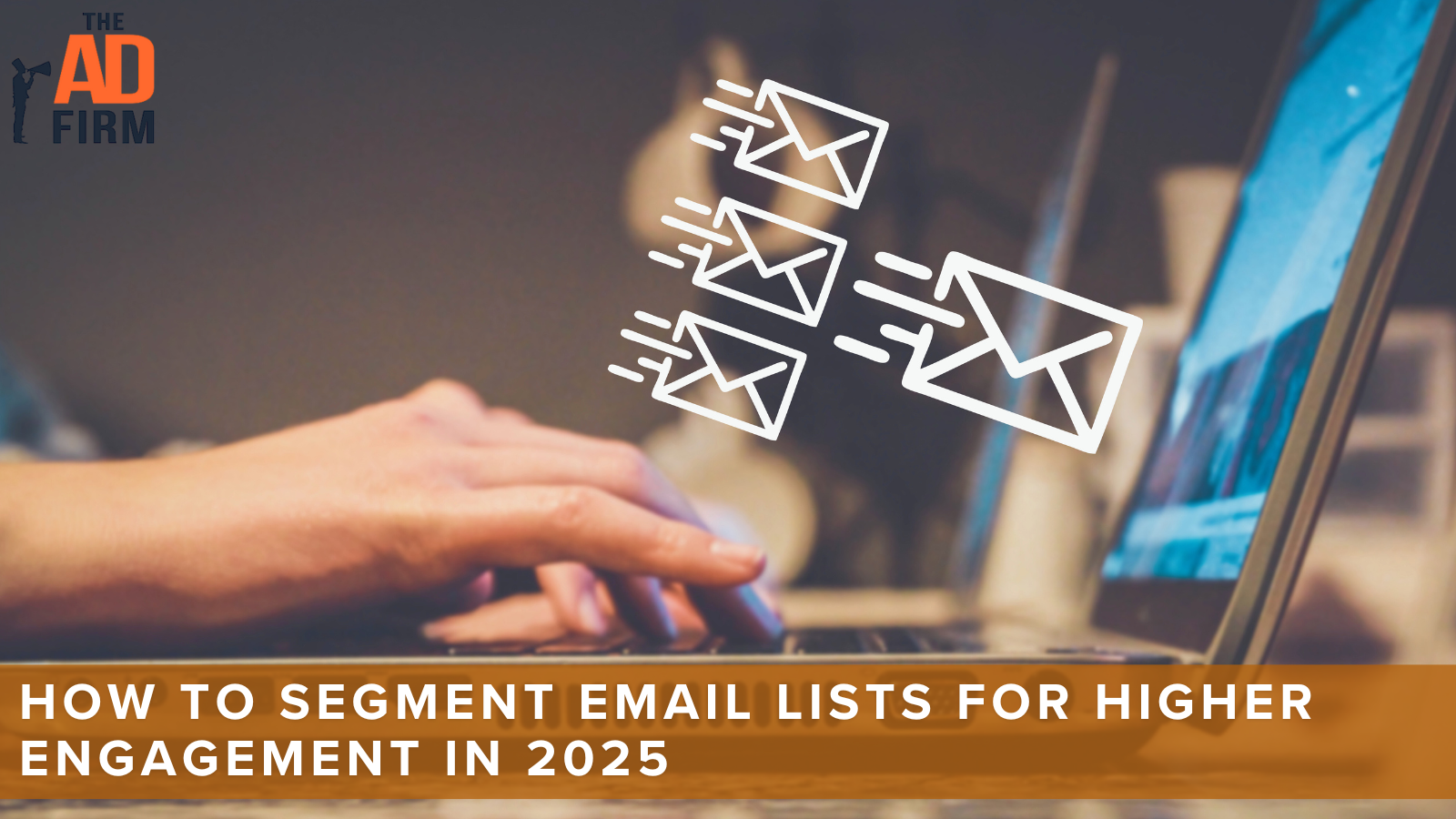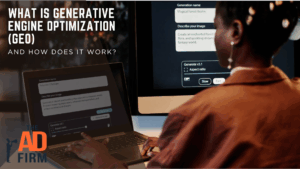Your subscribers are speaking to you through their behavior, but are you listening? Every click, open, and purchase tells a story about what your audience truly wants.
Yet, most businesses send the same generic message to everyone on their list and wonder why engagement rates keep declining. Email list segmentation is the practice of dividing your subscriber base into specific groups based on shared characteristics, behaviors, or preferences to deliver more targeted and relevant communication.
This strategic approach transforms email marketing into a data-driven powerhouse that can identify micro-patterns in customer behavior and respond with precision-targeted messaging that feels custom-crafted for each recipient, driving engagement rates that mass campaigns cannot achieve.
How Should You Segment Your Email List?
You should segment your email list by dividing subscribers into specific groups based on demographics, behaviors, interests, and where they are in their customer journey. The most effective approach combines multiple segmentation criteria to create targeted groups that receive highly relevant messaging.
Modern email marketing success requires understanding that your subscribers exist in different stages of awareness and intent, each requiring a unique approach to nurture them toward conversion.
Demographic segmentation uses age, gender, location, and job title to create foundational customer groups that reflect fundamental differences in communication preferences and purchasing power. A 25-year-old startup founder in Austin will respond differently to messaging than a 55-year-old executive in Chicago, and your content should reflect these distinctions to maximize relevance and engagement.
What Are the 4 Types of Customer Segmentation?
Customer segmentation helps you group subscribers into meaningful categories so you can send the right message to the right audience. The four main types are:
- Demographic: Age, gender, income, or occupation. For example, tailoring promotions differently for college students versus working professionals.
- Behavioral: Purchase history, browsing habits, and engagement patterns. This is a goldmine for email marketing because it shows you intent and buying signals. You might identify customers who browse multiple times before purchasing or subscribers who always open emails on mobile in the evening.
- Psychographic: Interests, values, and lifestyle choices. This digs into why customers buy. Two people of the same age and location might have very different motivations. Understanding this allows you to craft emotionally resonant messaging that builds stronger connections.
- Geographic: Location-based preferences and needs. Campaigns can be tailored by city, state, or climate, such as promoting cold-weather gear to customers in northern regions while highlighting summer essentials in warmer climates.
Each type provides unique insights, but when combined, they create a powerful framework for highly targeted email marketing campaigns that increase engagement and conversions.
Streamline Your Digital Assets with The Ad Firm
- Web Development: Build and manage high-performing digital platforms that enhance your business operations.
- SEO: Leverage advanced SEO strategies to significantly improve your search engine rankings.
- PPC: Craft and execute PPC campaigns that ensure high engagement and superior ROI.
Map Customer Lifecycle Stages
Lifecycle stage segmentation recognizes that different groups of subscribers require fundamentally different communication strategies to maximize engagement and conversion. Understanding where each subscriber is in their journey with your brand allows you to deliver relevant content that moves them to the next stage.
- New subscribers: Need a welcome sequence that introduces your brand and sets expectations.
- Repeat buyers: Respond better to exclusive offers and loyalty rewards that reinforce their decision to keep buying from you.
Engagement-based segmentation separates your subscribers based on their activity, which creates opportunities to re-energize inactive users while focusing on your most engaged audience.
- Active subscribers: These are people who regularly open and click your emails. They can handle more frequent communication and detailed product information.
- Dormant subscribers: These people require re-engagement campaigns designed to reignite their interest without overwhelming them.
This strategic approach ensures your email marketing efforts focus on where they’ll have the highest return while also working to recover potentially lost revenue.
ALSO READ: Email Marketing Copywriting Tips for Click-worthy Subject Lines
How to Collect and Organize Data
Strategic data collection in 2025 requires balancing actionable insights with subscriber privacy, creating systems that feel helpful rather than invasive. The most successful email marketing campaigns are built on rich, accurate data that allows for precise personalization.
Still, this information must be collected through methods that provide value to subscribers in exchange for their information. Modern data collection goes beyond basic contact information to include behavioral patterns, preference indicators, and engagement signals that paint a complete picture of each subscriber’s relationship with your brand.
Implement Strategic Data Gathering Methods
Signup forms are your first opportunity to collect segmentation data, but they should feel like a natural part of the value you’re providing, not a barrier. Best practices for gathering useful data include:
- Progressive profiling: Collecting additional information over time instead of all at once.
- Preference centers: Allowing subscribers to control the types of emails they receive.
- Strategic surveys: Offering valuable insights in exchange for exclusive content or special offers.
Integrating this with your CRM system ensures every interaction helps create a comprehensive view of each subscriber’s preferences and behavior.
Maximize Your Online Impact with The Ad Firm
- Local SEO: Capture the local market with strategic SEO techniques that drive foot traffic and online sales.
- Digital PR: Boost your brand’s image with strategic digital PR that connects and resonates with your audience.
- PPC: Implement targeted PPC campaigns that effectively convert interest into action.
The process for collecting behavioral and preference information begins by identifying the actions that correlate most strongly with conversion for your business. Track website behavior and connect it to email engagement to find the strongest predictors of purchase intent.
- Website behavior: Track page views, time on content, download activity, and shopping cart behavior.
- Micro-interactions: A sophisticated digital marketing agency can also track scroll depth on blog posts, video watch time, and social media engagement to create rich behavioral profiles for precise targeting.
Build Clean Data Management Systems
Data hygiene directly impacts the effectiveness of your email marketing because segmentation is only as good as the information it’s based on. Regularly cleaning and updating your data is essential for maintaining campaign performance. You should implement automated systems that:
- Flag outdated information and remove duplicate entries.
- Update subscriber status based on engagement patterns.
- Handle unsubscribes and manage bounced emails.
- Maintain compliance with privacy regulations.
Organizing segmentation data for easy implementation requires creating logical hierarchies that allow for both broad targeting and granular personalization. Privacy-first data strategies that support long-term segmentation goals include:
- Obtaining explicit consent for data collection.
- Providing clear value propositions for information sharing.
- Implementing robust security measures that protect subscriber information.
Your email marketing company should establish data governance policies that ensure compliance with regulations like GDPR and CCPA while remaining flexible to adapt to changing privacy requirements.
ALSO READ: Building a Successful Email List: Strategies for Growing Your Subscriber Base
How to Create Personalized Content
Personalization in 2025 extends far beyond inserting a subscriber’s first name into the subject line, requiring sophisticated content strategies that adapt to individual preferences, behaviors, and position in the customer journey.
Creating truly personalized email marketing experiences involves developing content frameworks that can be dynamically adjusted based on segment characteristics while maintaining consistent brand voice and messaging quality. The most effective email marketing services combine behavioral triggers with contextual relevance to deliver content that feels custom-created for each recipient.
Transform Your Online Strategy with The Ad Firm
- SEO: Achieve top search rankings and outpace your competitors with our expert SEO techniques.
- Paid Ads: Leverage cutting-edge ad strategies to maximize return on investment and increase conversions.
- Digital PR: Manage your brand’s reputation and enhance public perception with our tailored digital PR services.
Design Segment-Specific Messaging Systems
Creating segment-specific content requires understanding the unique motivations and pain points of each customer group. Your messaging should reflect these distinctions clearly.
- Busy executives appreciate efficiency and time-saving benefits.
- Cost-conscious consumers focus on value and comparison information.
Successful email campaigns use language, imagery, and calls-to-action that speak directly to the recipient’s situation rather than using a one-size-fits-all approach.
Dynamic content blocks let you create single email templates that automatically display different information based on subscriber characteristics. This streamlines campaign creation while maximizing relevance for each recipient. This technology enables you to:
- Show different product recommendations.
- Provide personalized pricing information.
- Display various promotional offers within the same email campaign.
Moving beyond simple name personalization to behavior-driven customization means incorporating recent website activity, past purchase patterns, and engagement history into your messaging.
Leverage Technology for Automation
Popular Email Service Providers (ESPs) like Mailchimp, Klaviyo, and HubSpot now offer advanced segmentation features that can automatically categorize subscribers based on complex behavioral patterns.
- AI and machine learning: These tools can analyze patterns across thousands of customers to predict which products a new subscriber is most likely to purchase and when they’re most likely to be ready to buy, enabling proactive outreach.
Setting up automated workflows that respond to segment behaviors creates a responsive email marketing system that nurtures leads and customers without constant manual intervention. These workflows can trigger:
- Welcome sequences for new subscribers.
- Re-engagement campaigns for inactive users.
- Abandoned cart reminders for potential customers.
- Loyalty programs for repeat buyers.
Advanced automation systems can even adjust sending frequency and content type based on individual engagement, optimizing the subscriber experience and maximizing campaign performance.
ALSO READ: Email Marketing Flops: 5 Reasons Your Emails Land in Spam Folders
How to Measure and Optimize Performance
Measuring the success of your segmentation strategy requires tracking metrics that reveal both immediate engagement and long-term customer value, providing insights that guide continuous optimization and strategic decision-making.
Advance Your Digital Reach with The Ad Firm
- Local SEO: Dominate your local market and attract more customers with targeted local SEO strategies.
- PPC: Use precise PPC management to draw high-quality traffic and boost your leads effectively.
- Content Marketing: Create and distribute valuable, relevant content that captivates your audience and builds authority.
The most critical metrics go beyond traditional open and click rates to include segment-specific conversion rates, customer lifetime value, and revenue attribution that directly connect email marketing activities to business outcomes.
A data-driven digital marketing agency establishes measurement frameworks that track both tactical performance and strategic impact, ensuring that segmentation efforts contribute measurably to overall business growth.
Track Essential Segmentation Metrics
Key metrics to monitor for each segment include open rates, click-through rates, conversion rates, and unsubscribe rates. These baseline measurements should be analyzed within the context of segment size, customer value, and business objectives.
- Segment-specific performance can reveal surprising insights. For example, a smaller, highly engaged segment may generate more revenue per subscriber than a larger, broadly defined group. This points to opportunities to refine your email marketing strategy for maximum impact.
- Advanced tracking includes measuring email deliverability by segment, revenue per email sent, and customer acquisition costs through email channels.
A/B testing for different segments allows you to optimize messaging, timing, and content for each customer group. This helps build knowledge about what drives engagement and conversion.
Measuring ROI and attribution for segmented campaigns requires connecting email interactions to sales data. This helps you identify which segments generate the highest customer lifetime value and deserve more investment.
Your email marketing company should implement attribution models that track the customer journey from initial email engagement to final purchase, providing clear visibility into how segmentation contributes to revenue growth.
Scale Your Segmentation Strategy
Balancing granular targeting with efficient campaign management is key to scaling your email marketing. Over-segmentation can lead to segments too small to be valuable, while under-segmentation means you’re missing opportunities. The best approach is to build core segments and use dynamic content to add personalization without increasing complexity.
Managing small segments and reactivating inactive subscribers requires specific strategies. Highly valuable, small segments may warrant dedicated campaigns. Inactive segments often respond best to automated re-engagement sequences. For long-term success, integrate your email marketing with your overall omnichannel strategy to create a unified customer experience.
Elevate Your Market Presence with The Ad Firm
- SEO: Boost your search engine visibility and supercharge your sales figures with strategic SEO.
- PPC: Target and capture your ideal customers through highly optimized PPC campaigns.
- Social Media: Engage effectively with your audience and build brand loyalty through targeted social media strategies.
Why This Approach Works in 2025
Consumer behavior has fundamentally shifted toward expecting personalized, relevant communication by brands, making strategic segmentation essential for maintaining competitive advantage in increasingly crowded digital marketplaces.
Privacy regulations and technological advances have created both challenges and opportunities for email marketing, requiring sophisticated approaches that respect subscriber preferences while delivering the personalized experiences that drive engagement and conversion.
The businesses that thrive in 2025 will be those that master the balance between automation and personalization, using data intelligently to create email experiences that feel human and helpful.
Consumer Behavior Demands Strategic Segmentation
Rising consumer expectations for personalized communication have made generic mass email campaigns not just ineffective but potentially damaging. Modern consumers can immediately recognize if an email was crafted for their specific needs.
- Personalized emails drive engagement.
- Generic messages trigger unsubscribes and spam complaints.
The competitive advantage of relevant, timely messaging becomes more pronounced as consumers get more selective about which brands they allow into their inboxes.
Data privacy regulations like GDPR and CCPA have made intelligent segmentation even more critical. While they limit the amount of data you can collect, they also raise consumer expectations for personalized experiences.
- Businesses that can extract maximum value from limited data through sophisticated segmentation will build stronger customer relationships.
- These businesses will also achieve better campaign performance than those that rely on outdated mass marketing.
Technology Makes Advanced Segmentation Accessible
AI and automation have democratized sophisticated segmentation capabilities, allowing even small and medium-sized businesses to implement strategies that were once only available to large corporations.
- Machine learning algorithms can analyze customer behavior, predict future actions, and automatically adjust segmentation criteria based on performance data. This enables continuously improving campaign effectiveness without needing constant manual optimization.
- Predictive segmentation, behavioral triggering, and dynamic personalization are now accessible to any business.
Integration with omnichannel marketing allows email to work with social media advertising, website personalization, and customer service. This creates unified customer experiences that reinforce your messaging across all touchpoints.
Amplify Your Market Strategy with The Ad Firm
- PPC: Master the art of pay-per-click advertising to drive meaningful and measurable results.
- SEO: Elevate your visibility on search engines to attract more targeted traffic to your site.
- Content Marketing: Develop and implement a content marketing strategy that enhances brand recognition and customer engagement.
Advanced digital marketing agency services can now connect email engagement data with website behavior, social media interactions, and offline purchase activity to create comprehensive customer profiles.
This enables unprecedented targeting precision and personalization. This integration ensures that segmentation supports your broader business objectives while maximizing the impact of every customer interaction.
Transform Your Email Marketing Results Today
The strategic implementation of email list segmentation represents the difference between businesses that struggle with declining engagement rates and those that achieve consistent growth through increasingly effective customer communication. Every day you delay implementing sophisticated segmentation strategies, your competitors gain ground by building stronger relationships with their subscribers and capturing market share through more relevant, compelling email marketing campaigns.
At The Ad Firm, we specialize in transforming underperforming email campaigns into revenue-generating powerhouses through data-driven segmentation strategies that deliver measurable ROI for businesses nationwide. The question isn’t if segmentation will improve your results; the data conclusively proves it will, but rather if you’ll implement these strategies before your competitors do.
Ready to boost your email engagement rates? Contact The Ad Firm today for a free email marketing consultation and discover how our proven segmentation strategies can transform your campaigns into consistent revenue drivers.






